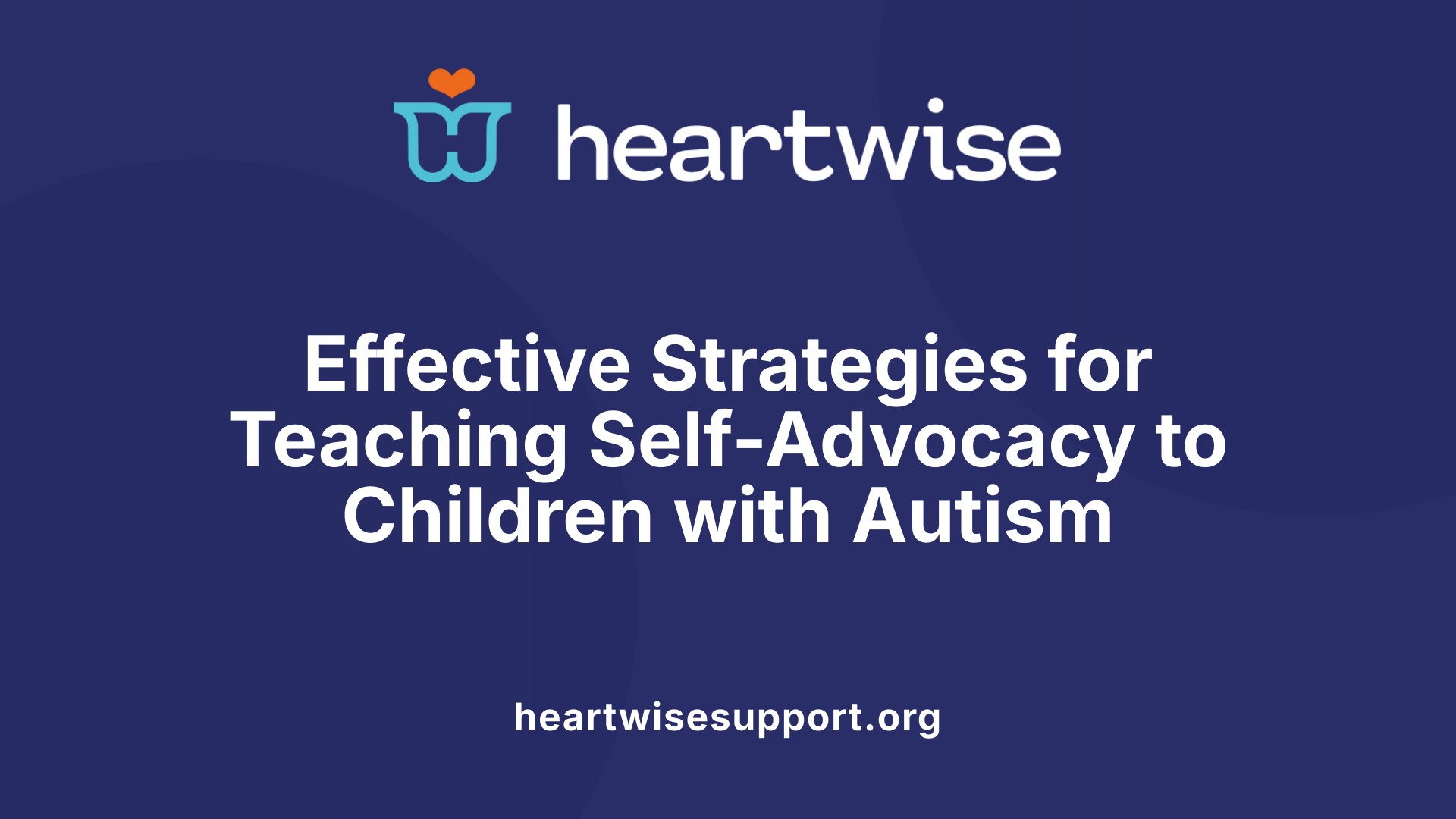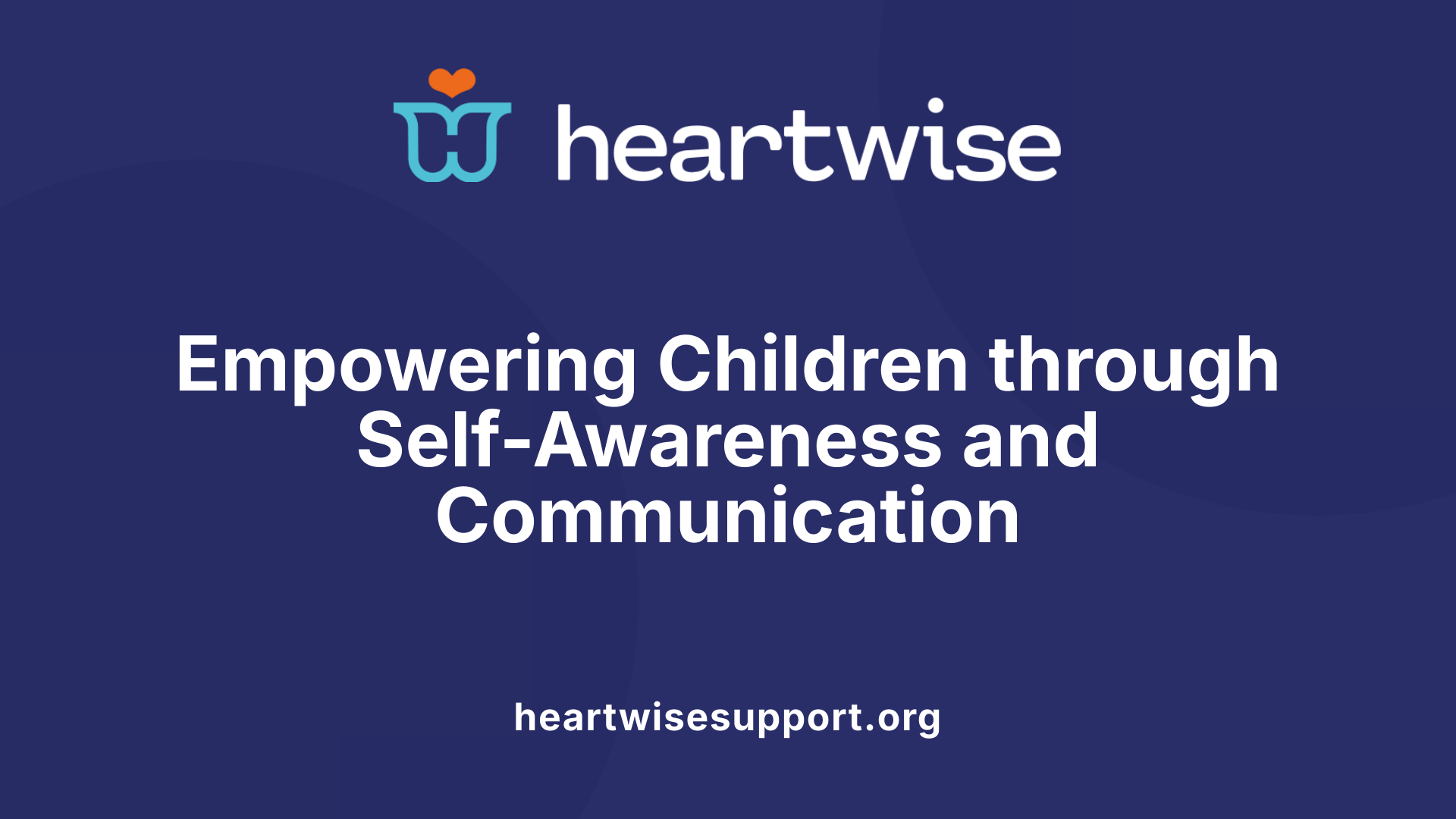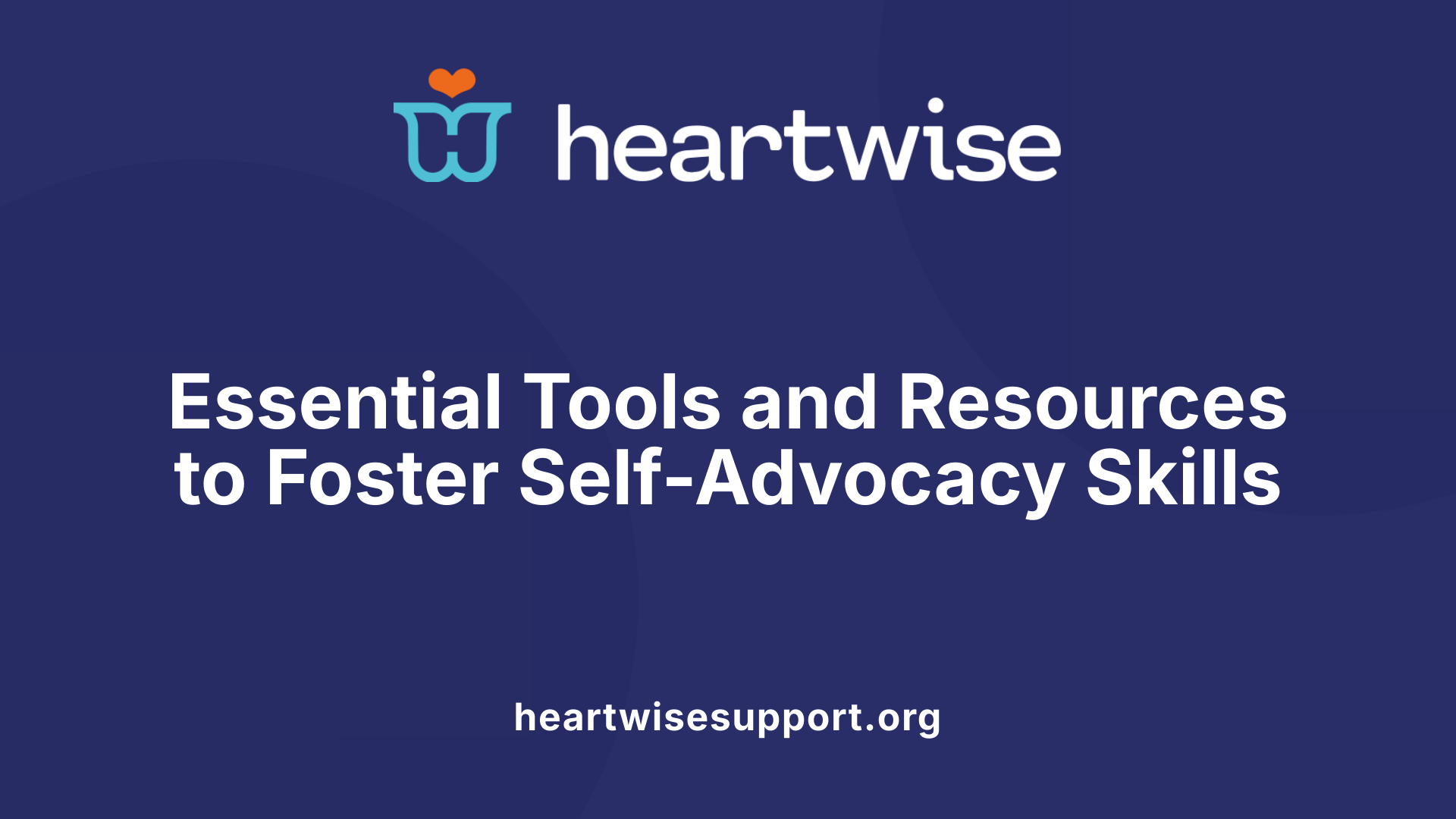Understanding Self-Advocacy and Its Significance
Self-advocacy is a vital skill that enables children with autism to effectively communicate their needs, rights, and preferences. Early and consistent teaching of these skills helps foster independence and confidence, preparing them for future challenges and opportunities. This article explores practical strategies, resources, developmental considerations, and the importance of fostering self-awareness and autonomous communication to empower children with autism throughout their lives.
Teaching Self-Advocacy Skills to Children with Autism

How do you teach children with autism self-advocacy skills?
Teaching children with autism self-advocacy skills is about helping them understand and confidently express their needs, rights, and preferences. This process begins early and requires ongoing, consistent practice.
One of the most effective methods involves using social stories and role-playing scenarios. Social stories are simple, visual narratives that illustrate specific situations, such as requesting a break or asking for help, helping children anticipate and respond appropriately.
Role-playing different everyday scenarios also builds confidence and practical skills. For example, a child might practice saying no to unwanted touch or requesting accommodations at school or in public places.
Involving children in developing their Individualized Education Program (IEP) is another crucial step. This participation promotes self-awareness and self-determination, as children learn to identify their needs and advocate for appropriate supports.
Parents and educators play a vital role by modeling advocacy behaviors and demonstrating how to communicate effectively using accessible methods. These include visual supports, picture exchange systems, or augmentative and alternative communication (AAC) devices.
Encouraging open discussions about autism helps children understand their strengths and the challenges they face. This knowledge empowers them to disclose their diagnosis appropriately, which can lead to receiving better support and accommodations.
Supporting children’s self-advocacy skills also means showing real-life examples and sharing successful advocacy stories through social media or resource groups. Such stories reinforce that advocating for oneself is a lifelong skill that leads to greater independence and confidence.
Overall, teaching self-advocacy is a multi-faceted process that involves communication skill development, self-awareness activities, active participation in planning, and open conversations about autism. These strategies collectively help children with autism navigate life’s challenges and advocate effectively for themselves as they grow.
Core Self-Advocacy Skills and Developmental Strategies

What are self-advocacy skills for children with autism?
Self-advocacy skills for children with autism involve teaching them how to effectively express their needs, preferences, and challenges. These skills are fundamental for fostering independence, self-confidence, and the ability to participate actively in their educational and social environments.
Developing self-advocacy begins with understanding their rights and responsibilities, which may include knowledge of laws like the Individuals with Disabilities Education Act (IDEA) and the Americans with Disabilities Act (ADA). It also encompasses the ability to participate in decision-making processes, such as IEP meetings, and to disclose or share information about their needs appropriately.
Strategies to build these skills include the use of social stories, which help children understand various social situations and appropriate responses, and role-playing scenarios to practice advocating in safe, controlled settings. Involvement in the IEP process is especially effective; it teaches children to articulate their strengths and challenges, set goals, and understand the supports available to them.
Teaching self-advocacy should be tailored to each child's developmental stage and communication abilities. For nonverbal children, alternative methods such as pointing, sign language, or augmentative and alternative communication (AAC) devices can be used.
Consistent practice and positive reinforcement are essential. Supporting children from a young age helps them become confident in expressing themselves and navigating complex social situations as they grow.
By integrating these skills into everyday routines and educational activities, children with autism can develop the capacity to seek support, set boundaries, and make informed decisions—a critical foundation for future independence and success in adult life.
Overall, fostering self-advocacy from an early age equips children with autism to advocate for their needs throughout their lives, ultimately improving their overall wellbeing, participation, and happiness.
Role of Self-Awareness and Autonomous Communication

What is the importance of self-awareness and autonomous communication in self-advocacy for children with autism?
Self-awareness is a fundamental skill for children with autism, helping them recognize their own needs, strengths, and challenges. When children understand what they require to succeed and feel comfortable, they are better equipped to communicate those needs effectively. This understanding forms the basis for successful self-advocacy.
Autonomous communication allows children to express their preferences, needs, and rights clearly and confidently. This skill is crucial for negotiating accommodations in school, the workplace, or daily life. Whether through speech, sign language, or augmentative and alternative communication (AAC), being able to articulate oneself promotes independence and reduces frustration.
Developing these skills involves a combination of direct instruction, modeling by parents and educators, and consistent practice. Supportive environments that encourage disclosure of needs and assertiveness are essential. For example, teaching children to say “no” when overwhelmed or to ask for help when confused nurtures their confidence.
Early efforts to foster self-awareness and communication lay the groundwork for lifelong self-advocacy. These abilities help children navigate social and educational settings, participate fully, and access necessary supports. Over time, children learn to articulate their goals, set boundaries, and participate actively in decision-making processes.
Promoting self-awareness and autonomous communication is not just about immediate needs; it prepares children with autism for lifelong independence and integration. By empowering them to speak up and understand their own needs, we enable greater inclusion, self-determination, and resilience, ultimately supporting their well-being and quality of life.
Supporting Independence and Self-Determination in Children with Autism
How can adults support independence and self-determination in children with autism through self-advocacy?
Supporting independence in children with autism involves a combination of teaching essential life skills, creating opportunities for practical experience, and fostering self-advocacy abilities. Adults play a vital role in guiding children towards becoming confident, autonomous individuals who can navigate everyday challenges.
One of the foundational approaches is teaching skills such as self-care, effective communication, and decision-making. These skills are best learned through methods tailored to the child's developmental level, including visual supports, augmentative and alternative communication (AAC), and task analysis. For example, visual schedules can help children understand daily routines, while AAC tools enable nonverbal children to express their needs more clearly.
Encouraging children's participation in daily activities—like household chores, community safety routines, and leisure pursuits—helps build practical skills and confidence. Engaging children in real-world experiences not only improves their functional independence but also promotes their understanding of their environment and personal rights.
A critical aspect of fostering self-determination is explicitly teaching self-advocacy skills. Children should learn how to request breaks, make choices, and speak up about their needs and preferences. Role-playing scenarios and social stories are effective tools to practice these skills and prepare children for various situations, such as requesting accommodations in school or asserting their boundaries.
Using visual aids—such as checklists, cue cards, or schedules—can reinforce learning and help children manage routines independently. Practice through rehearsal and positive feedback builds confidence, while gradually increasing the complexity of challenges helps children develop resilience.
Involving children in their individualized education program (IEP) meetings and community programs is another step toward self-determination. This involvement helps children understand their rights, set personal goals, and develop a strong sense of agency. Supporting their active participation cultivates an understanding of self-advocacy opportunities that will serve them throughout life.
Finally, guiding children to recognize their strengths, interests, and rights empowers them to make informed decisions and pursue meaningful participation in all areas of life. Encouraging exploration and providing outlets for expressing preferences—as well as teaching them about legal protections like the Americans with Disabilities Act—further promotes independence.
By combining these strategies, adults can create a supportive environment that nurtures lifelong independence and a sense of self-determination through continual skill development and advocacy practice.
Resources and Evidence Supporting Self-Advocacy Development

Are there resources or educational tools available to support self-advocacy development in children with autism?
Yes, a variety of programs, guides, and toolkits exist to aid in teaching self-advocacy skills to children with autism. One prominent example is the Advocacy Tool Kit, which provides a structured framework for developing skills such as negotiation, understanding personal rights, and effective communication. These resources are adaptable to different ages and developmental levels, making them suitable for early learners as well as older students.
Organizations dedicated to autism advocacy and support, including Autism Speaks, Self-Advocates Becoming Empowered (SABE), and the Autistic Self Advocacy Network (ASAN), offer extensive online resources. Their websites feature informational guides, videos, webinars, and interactive toolkits aimed at empowering individuals with autism to advocate for themselves. These materials cover critical topics such as understanding legal rights, navigating educational and community settings, and practicing advocacy through social stories and role-playing scenarios.
Practical teaching approaches also emphasize the use of social stories, role-playing, and real-life scenarios to cultivate advocacy skills. For example, children can learn to request accommodations at school, participate in IEP meetings, or express their sensory needs during daily interactions. These methods help children build confidence and familiarity with advocacy as a natural part of communication.
At the core of effective self-advocacy development is open communication. Encouraging children to discuss their strengths and challenges, share their personal stories of advocacy success, and recognize their self-worth fosters a positive mindset. By highlighting real examples of successful advocacy, children learn that their voices matter and that advocacy is a lifelong skill.
Research supports the positive impact of early and ongoing self-advocacy education. Studies indicate that children and young adults with strong self-advocacy skills exhibit higher confidence, greater self-determination, and are better prepared for transitions into higher education, employment, and independent living. These skills not only improve academic and social outcomes but also contribute to overall well-being and happiness.
In summary, the wealth of available tools, resources, and organizational support forms a solid foundation to help children with autism develop essential self-advocacy skills. Early exposure, tailored strategies, and fostering a supportive environment enable children to grow into confident self-advocates capable of navigating life's challenges.
| Resource Type | Examples | Focus Area | Description |
|---|---|---|---|
| Toolkits/Guides | Advocacy Tool Kit | Skills Development | Structured guidance for negotiation, rights, and communication |
| Organizations | Autism Speaks, SABE, ASAN | Information & Support | Online resources, videos, webinars, and advocacy stories |
| Teaching Strategies | Social stories, role-play | Practical Skills | Methods for teaching advocacy through realistic scenarios |
| Research Evidence | Various studies | Impact & Outcomes | Link between advocacy skills and confidence, transition readiness |
This comprehensive range of available resources underscores the importance of incorporating self-advocacy education into teaching programs and supports for children with autism, fostering independence and empowerment at every stage of life.
Building a Foundation for Lifelong Self-Advocacy
Developing self-advocacy skills in children with autism is a continuous, age-appropriate process that starts early and adapts across development stages. Incorporating strategies such as social stories, role-playing, participation in IEPs, and real-world practice, coupled with accessible resources and supportive environments, empowers children to become confident advocates for themselves. Encouraging open discussions about autism, recognizing individual strengths, and fostering autonomous communication are central to this developmental journey. By supporting children in building self-awareness, independence, and decision-making abilities, caregivers and educators can lay a strong foundation for lifelong self-advocacy, ultimately leading to a more inclusive and empowering future.
References
- Teaching Your Child Self-Advocacy - Autism Speaks
- Self Advocacy - Autism Research Institute
- [PDF] A CURRICULUM FOR SELF ADVOCATES
- Help Children Learn How to Self Advocate
- Research-Based Recommendations for Building Self-Advocacy ...
- Self-Advocacy - The Autism Community in Action
- The Importance of Self-Advocacy in the Transition Process
- Self-Advocacy Skill Building for Teens - Milestones Autism Resources











